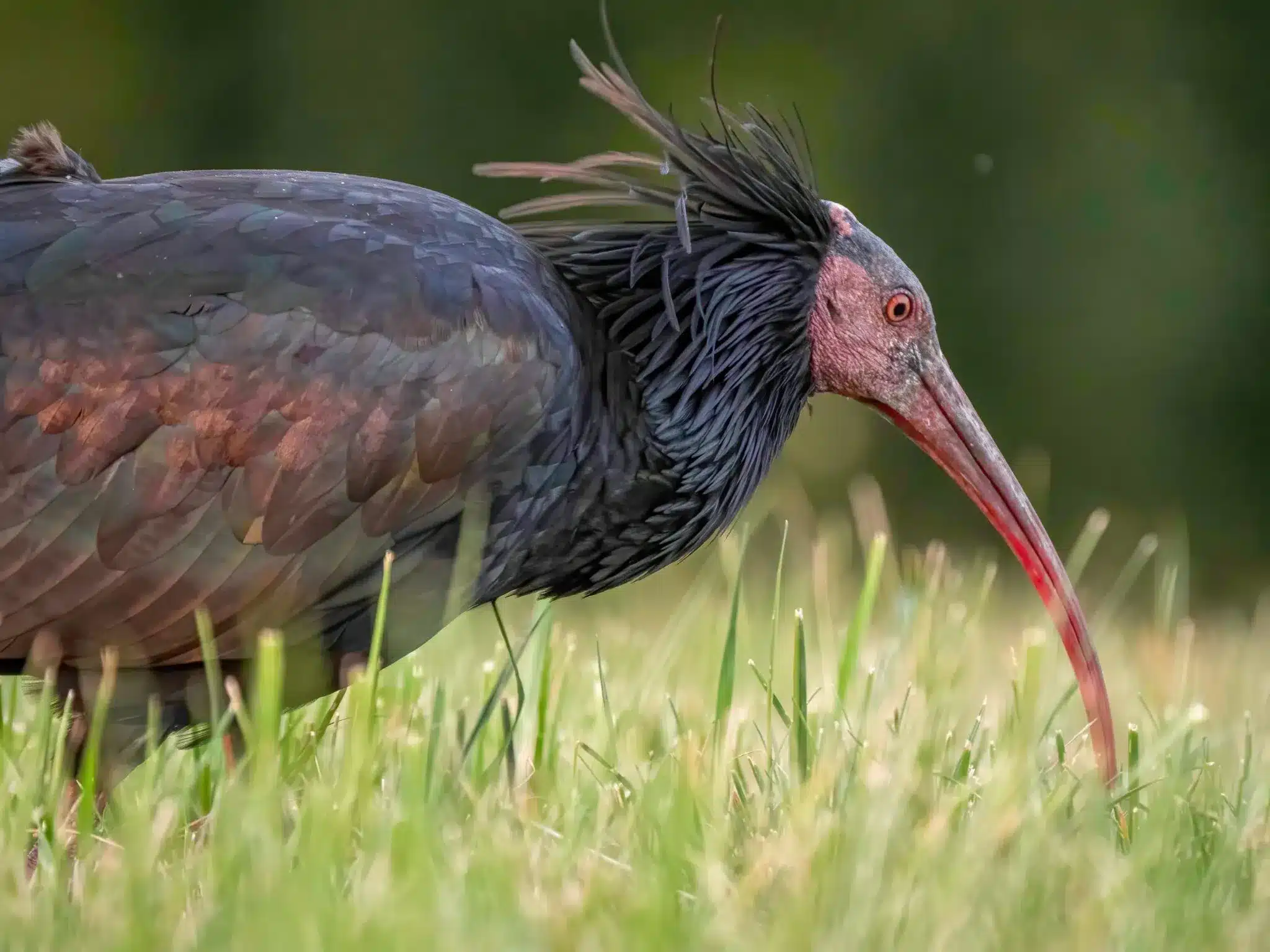About Northern Bald Ibis:
- Scientific Name: Geronticus eremita
- Conservation status: Endangered (formerly Critically Endangered)
- Historical range: Once native to Central Europe until the 17th century, also found in North Africa and the Arabian Peninsula.
- Extinction in Europe: The species became extinct in Central Europe by the 17th century due to excessive hunting.
- Distinctive features: The Northern Bald Ibis is known for its black plumage with an iridescent green sheen, a bald red head adorned with black markings, and a long, downward-curved beak.
- Their red beak and legs stand out against their dark feathers. There is no sexual dimorphism in this species.
- Diet: They primarily feed on insect larvae, earthworms, and other invertebrates, using their long, slender beak to probe the ground, guided by their sense of touch.
- Habitat: These ibises prefer open areas with short grass, such as meadows, pastures, or even sports fields like golf courses. Despite their bald head resembling that of a vulture, they are not scavengers.
- Social behaviour: Northern Bald Ibises are social birds, historically forming large colonies with thousands of individuals.
- They engage in a ritual greeting involving crest-spreading and bowing, which often triggers a similar response throughout the colony.
- Monogamy: Typically, seasonally monogamous, breeding partnerships often change yearly, though some pairs may stay together for multiple years.
- Breeding habits: They choose steep rock faces with protective nooks for nesting, laying up to four greenish eggs. Incubation begins with the first egg, leading to staggered hatching times.
Nestling development: Young birds fledge within 42-50 days, initially following their parents before joining juvenile groups. They learn migration routes by following experienced birds during the fall migration.
Q1. What is IUCN?
The International Union for Conservation of Nature is a global organization composed of governments, NGOs, scientists, and experts dedicated to conserving nature and promoting sustainability. Its primary role involves assessing the conservation status of species, providing data and analysis on the state of biodiversity worldwide, and offering guidance and frameworks for conservation efforts.
Last updated on June, 2025
→ UPSC Notification 2025 was released on 22nd January 2025.
→ UPSC Prelims Result 2025 is out now for the CSE held on 25 May 2025.
→ UPSC Prelims Question Paper 2025 and Unofficial Prelims Answer Key 2025 are available now.
→ UPSC Calendar 2026 is released on 15th May, 2025.
→ The UPSC Vacancy 2025 were released 1129, out of which 979 were for UPSC CSE and remaining 150 are for UPSC IFoS.
→ UPSC Mains 2025 will be conducted on 22nd August 2025.
→ UPSC Prelims 2026 will be conducted on 24th May, 2026 & UPSC Mains 2026 will be conducted on 21st August 2026.
→ The UPSC Selection Process is of 3 stages-Prelims, Mains and Interview.
→ UPSC Result 2024 is released with latest UPSC Marksheet 2024. Check Now!
→ UPSC Toppers List 2024 is released now. Shakti Dubey is UPSC AIR 1 2024 Topper.
→ Also check Best IAS Coaching in Delhi






















